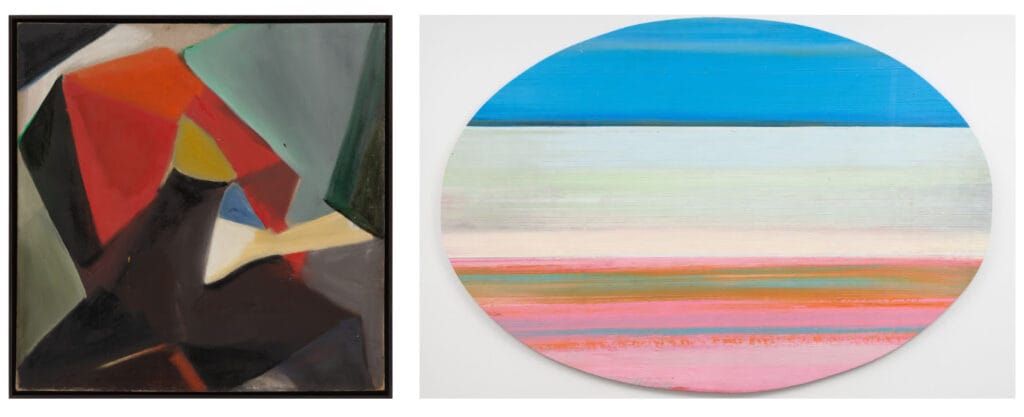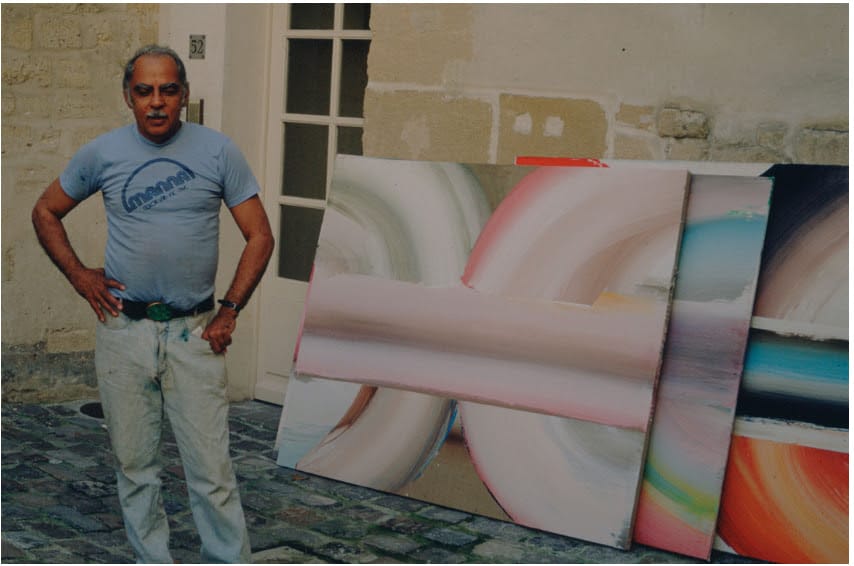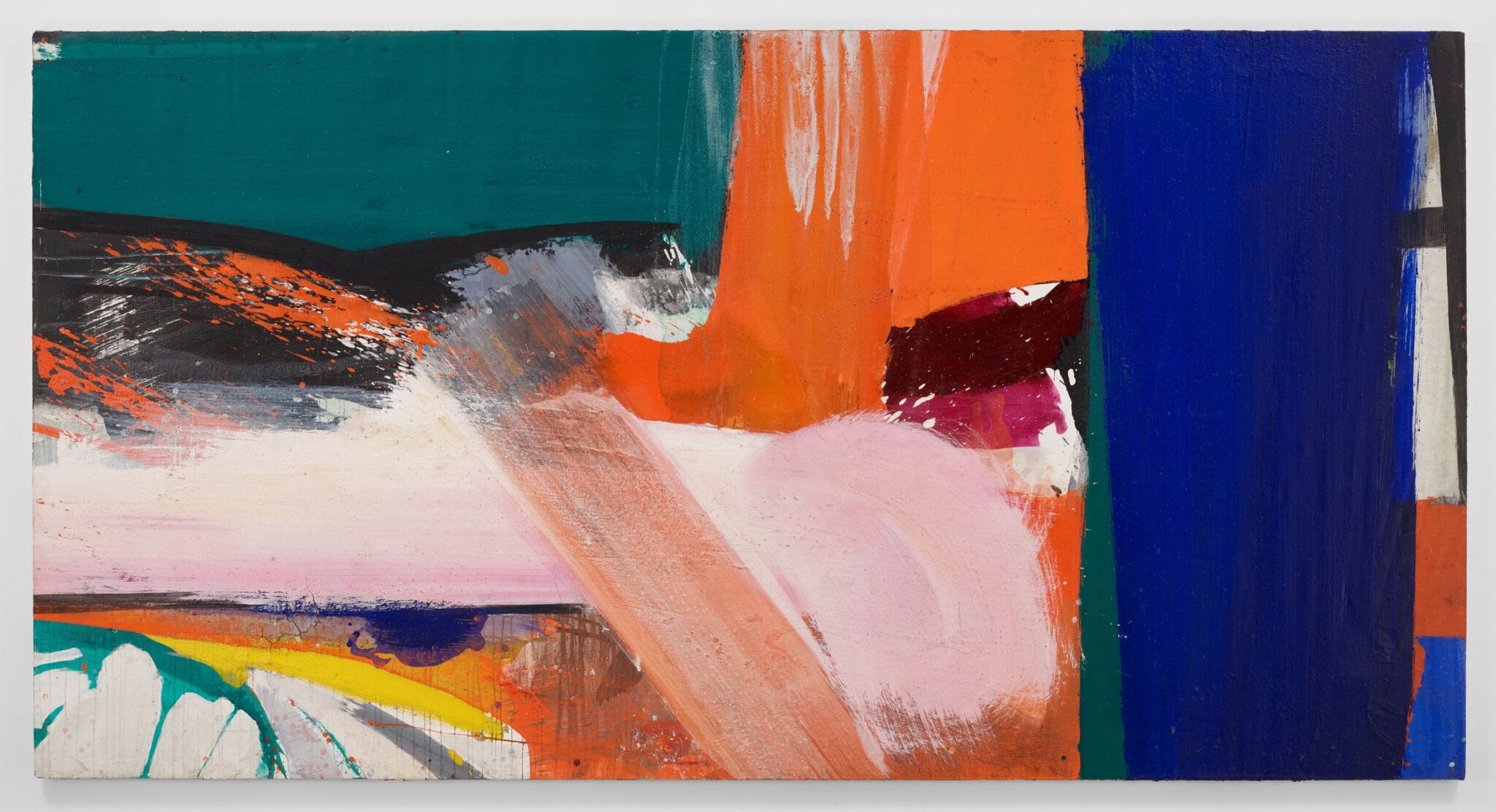Beginning 7 September, two full floors of Hauser & Wirth’s 22nd Street building in New York will be devoted to ‘The Big Sweep,’ an exhibition covering the six-decade career of pioneering American abstractionist Ed Clark (1926 – 2019). Taking its title from Clark’s dedication to innovative techniques, particularly his revolutionary embrace of the common push broom as a paintbrush, this presentation documents the ways in which Clark pushed the boundaries of abstraction and its conventions beyond expressionism, from his breakthrough introduction of the shaped canvas to his distinctive approach to and impact upon questions of materiality, form and color.
‘The Big Sweep’ exhibition will be accompanied by the release of ‘Ed Clark: The Big Sweep; Chronicles of a Life, 1926–2019,’ the definitive new book on Clark, produced by Hauser & Wirth Publishers.
Among the exceptional works on view, the earliest is ‘Untitled’ (1955). Completed while Clark was living in Paris, this canvas reflects the direction of the artist’s early practice under influences he encountered upon arriving in Europe in 1952, after studying at the Art Institute of Chicago. Here, he has created a work at once in dialogue with the art of his contemporaries, while expressing a velocity discernably his own. In Paris, Clark surrounded himself with such luminary American peers as Beauford Delaney, Sam Francis and Joan Mitchell, while likewise finding profound inspiration in the paintings of French artist Nicolas de Staël. Released from the bigotry and racialized assumptions that burdened Black artists in the United States, Clark felt liberated from the focus on realism that had dominated his practice back home. He began to experiment with abstraction, and to lean into the central role gesture and the tangibility of paint could play in practice. Of this period, he said, ‘I began to believe, from my conversations with other artists, that the real truth is in the stroke. For me, it is large, bold strokes that do not refer distinctly to seen nature. The paint is the subject. The motions of the strokes give the work life.’

Clark returned to the United States in 1956 and quickly established himself in the New York School alongside Al Held, Franz Kline, Yayoi Kusama and George Sugarman, among others. In 1957, he broke away from the limitations of the traditional rectangular canvas and created the first shaped painting in American modernism, now in the collection of the Art Institute of Chicago. By including protruding collage elements in his paintings, he immediately endowed his work with a bold, palpable physicality. In 1967, Clark spent a year living at Joan Mitchell’s home and studio in Vétheuil, France, where he painted his first oval canvas, mimicking the shape of the human eye, and using a push broom to create large sweeping brushstrokes. The monumental ovoid canvas of ‘Untitled’ (c. 1970s)––on view in this exhibition––as well as the embedded oval shape of ‘Integrated Oval #1’ (1972)—exhibited in the Whitney Annual that same year—both suggest the pleasure and sense of freedom Clark achieved through the formal experimentation that in turn allowed him to intensify his gesture and the effects of materiality, form and color.
Clark would become renowned for his revolutionary use of a push broom as a paintbrush, a technique he first tried in Paris in 1956 and that, along with the shaped canvas, would come to define his practice. The push broom offered the artist a way to imbue his work with dramatic degrees of dynamism and energy that could not be realized by a conventional paintbrush. As demonstrated in such paintings as ‘Locomotion’ (1963) and ‘North Light (Paris)’ (1987), Clark’s method used the pressure of his entire body—he described the effect as being akin to ‘cutting through something really fast; that’s what the straight stroke with the push broom gives you, speed’— to evenly extend the momentum of his sweeping gesture across the whole surface of the canvas. Though Clark would occasionally vary the intensity of the line and color in a single motion, exploring nuances in its effects, the power of this revolutionary approach opened new vistas for abstraction with a big sweep.
By the 1980s, Clark had morphed the linearity of his earlier paintings into more tubular motifs that curved and splintered around the canvas. This ‘Broken Rainbow’ series is characterized by rounded brushstrokes that expand upon the curved lines of the 70s ovals with a new energy and confidence. Sometimes applying dry pigment to a wet broom, Clark injected his sweeping gestures with even greater motion and liveliness. In his late paintings, made in the first years of the 21st century, such as ‘Creation’ (2006), Clark’s forceful broom strokes gave way to softer, at times even aqueous, gestures that expressed a final burst of pure liberation.
Released in conjunction with the exhibition, ‘Ed Clark: The Big Sweep; Chronicles of a Life, 1926–2019’ (Hauser & Wirth Publishers) chronicles the story of the artist’s life and work through reprints of important historical texts by numerous authors, including Darby English, Anita Feldman, Geoffrey Jacques, Kellie Jones, April Kingsley and Corinne Robins; interviews with Clark by Quincy Troupe, Jack Whitten and Judith Wilson; and photographs, letters and ephemera from the archive of Clark’s estate and his papers at the Archives of American Art, Smithsonian Institution, Washington, D.C.

About the artist
Born in New Orleans in 1926 and raised in Chicago, Clark emerged in the 1950s as a pioneer of the New York School. Over the course of seven decades, his experimentations with pure color, abstract form, and the seductive materiality of paint have yielded an oeuvre of remarkable originality, extending the language of American abstraction. Clark’s breakthroughs have an important place in the story of modern and contemporary art: in the late 1950s he was the first American artist credited with exhibiting a shaped canvas, an innovation that continues to reverberate today. His search for a means to breach the limitations of the conventional paintbrush led him to use a push broom to apply pigment to canvas laid out on the floor. Defying the discreet categories of gestural and hard-edged abstraction, Clark has masterfully interwoven these approaches into a unique form of expressionism.
After studying at the Art Institute of Chicago and L’Academie de la Grande Chaumiere in Paris, Clark continued to live and work in France, absorbing the influence of such European modernists as Nicolas de Staël, Pierre Soulages, and Jean Riopelle. He became a member of a social and intellectual circle of American expatriate artists and writers, including fellow African-American creatives Beauford Delaney, Richard Wright, James Baldwin, and Barbara Chase-Riboud. Clark settled in New York in 1957, where over the ensuing decade he became part of the city’s dynamic downtown scene and a co-founder of the Brata Gallery, an artist-run cooperative among the Tenth Street galleries of the East Village. From the late 1960s until the last decade, Clark split his time between New York and Paris, traveling extensively to other locales from Mexico and Brazil to North Africa and Greece. In 2019, while living in Detroit, Clark passed away at the age of 93. ‘No matter what I do,’ the artist said, ‘there’s not a day that I’m not an artist.’
